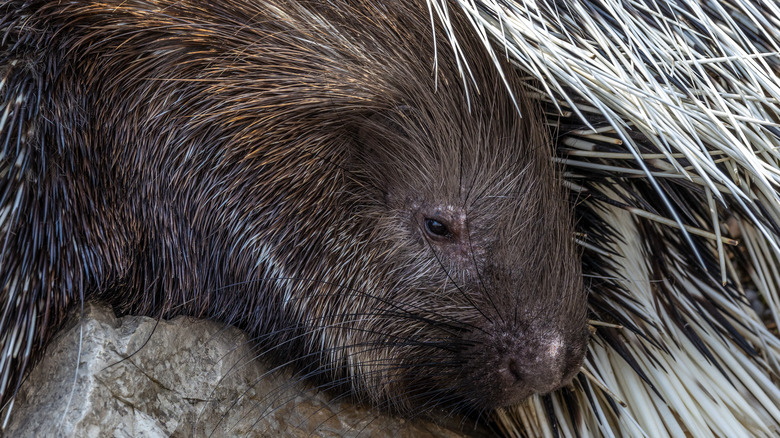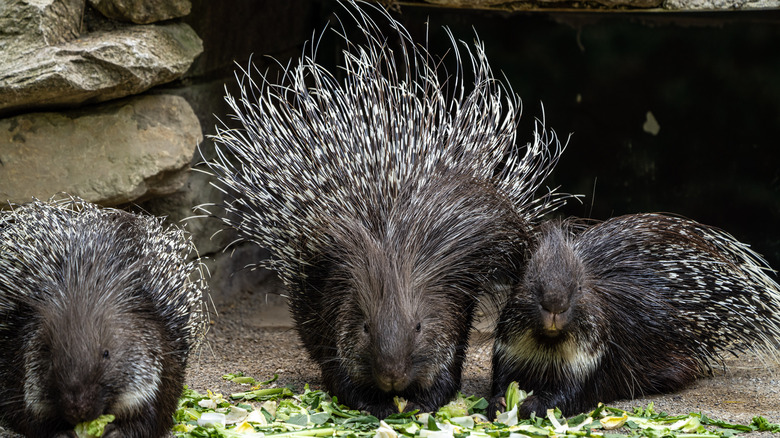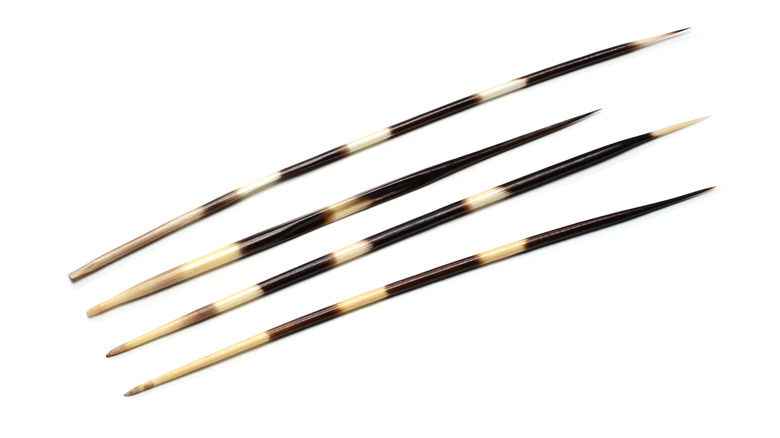Porcupines Have A Lot More Quills Than You Think
Porcupines have that unique look that both fascinates and, perhaps, terrifies — waddling about, a round body covered in thousands of quills (via Britannica). Those quills themselves are unusual, as well as plentiful.
As stated by Britannica, "porcupine" doesn't refer to just one type of animal. Rather, there are 25 species that fit the following characteristics: quill-bearing and herbivorous. Porcupines can best be described as large rodents with legs seemingly too short for their bodies. They can have a number of colorations, like grayish brown or blackish, along with patterns of orange, black, yellow, and so on. The San Diego Zoo Wildlife Explorers tell us that North American porcupines sometimes chew on bones for calcium.
Porcupines can be found in many locations on the planet, such as South America, Mexico, North America, and Southeast Asia. But there's one thing that might strike curiosity among many. Those quills — so many quills. Exactly how many?
North American porcupines have quills to spare
Perhaps the most familiar to readers might be the North American porcupine, which weighs 15 pounds and can grow over 30,000 quills. This makes it one of the more formidable animals in terms of self-defense, though not entirely unassailable. Predators such as wolverines and bobcats can and do hunt porcupines from time to time with success (per Britannica) — their undersides are without quills and so are unprotected.
Quill growth for a porcupine starts early. As stated by National Geographic, baby porcupines are born with soft quills. Development is also fairly fast, as it only takes a couple of days for soft quills to become hard, making them defense-capable quite quickly.
In general, animal hair, like human hair, is replaced frequently, as new hair grows out and the old is then shed. It is the same case with porcupine quills, as they also shed them. It doesn't take long for quills to develop, either, as they tend to grow at a rate of one millimeter every two days (via Texas Parks & Wildlife)
How do porcupine quills work?
One popular image of porcupines that comes to mind for many people is that a porcupine is able to shoot its quills, sort of like a spiky grenade. Unfortunately (or perhaps fortunately), the way their quills work is a bit less exciting than imagination would suggest.
Porcupines do not throw their quills at all, but instead depend on a predator coming into contact with their pointy tips in order to inflict harm. As stated by National Geographic, it doesn't take much for their quills to detach from their body. Most of the time, any animal attempting to attack a porcupine instead gets a face full of sharp barbs. A porcupine quill is really a kind of modified hair, with the longest quills growing along the creature's back and tail. (Only the nose, legs, and underside lack quills, says Texas Parks and Wildlife.)
The porcupine can control the position of its quills, raising them in danger, laying them flat when relaxed. What makes this so dangerous is that the barbs themselves are designed in a way that makes them easy to pierce skin, but incredibly difficult to remove. As NPR states, porcupine quills are analogous to serrated knives, with bumps and grooves that make removal a nightmare. Quills have also been known to cause infections. The best solution? Pulling it out, with a quick jerk, as soon as possible — they've been known to continue to work their way through whatever creature they've entered.


